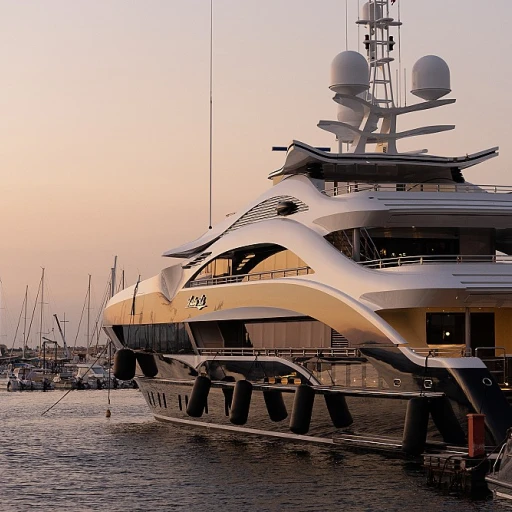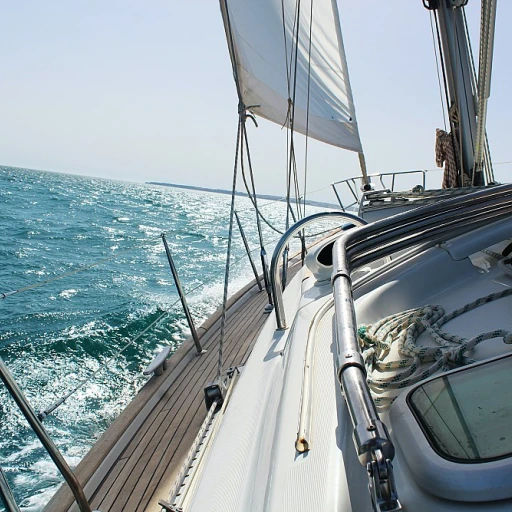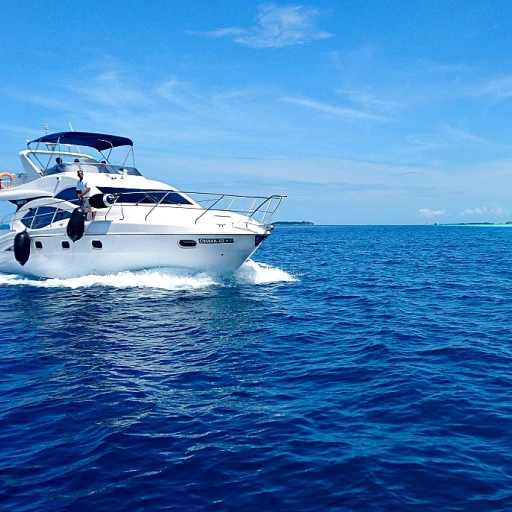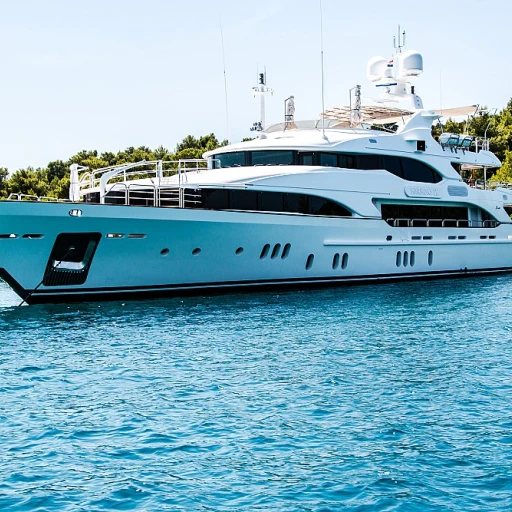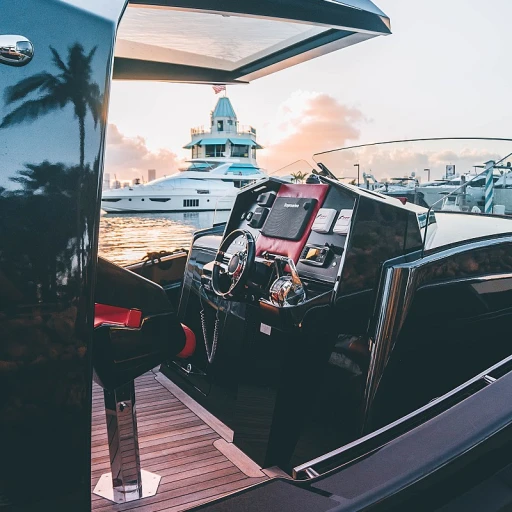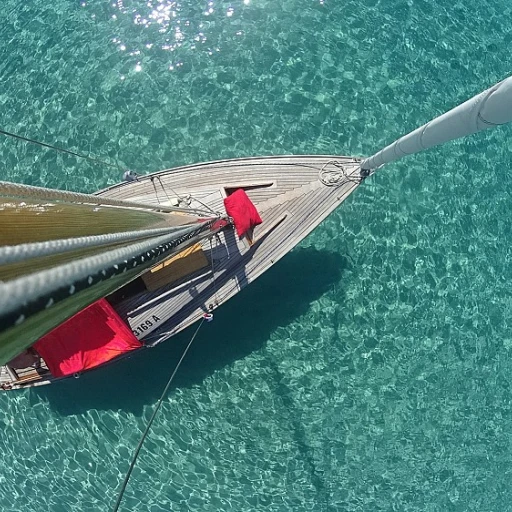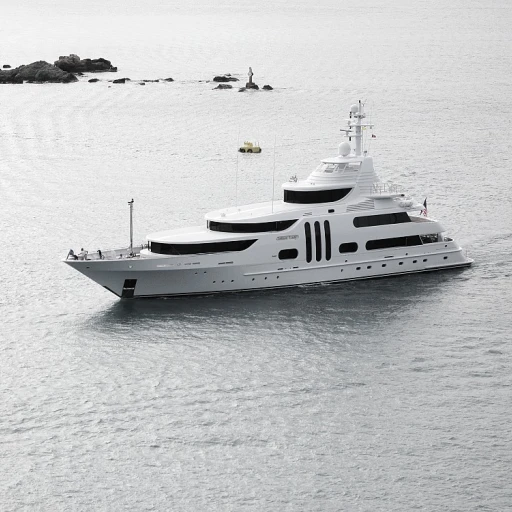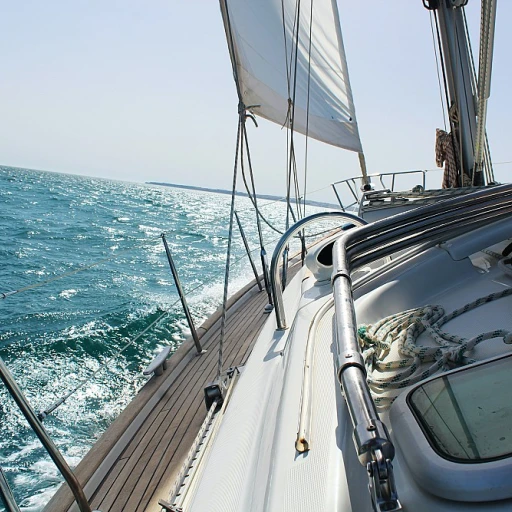
Understanding the Importance of a Secure Companionway
The Importance of Yacht Security
Securing your yacht is more than just a measure against theft; it's about ensuring peace of mind while you enjoy your time on the water. A well-secured companionway is crucial for maintaining the integrity and safety of your vessel. Whether you own a Beneteau or another renowned boat brand, the first line of defense is often the companionway lock. Without a strong and reliable lock, vulnerabilities can be exploited, potentially compromising both the boat interior and any onboard valuables. The mindset should be proactive rather than reactive when it comes to yacht security. It's vital to consider the broader scope of yacht safety, ensuring your safety kit is well-stocked with essential items. A robust locking mechanism is an integral part of this comprehensive safety approach. Locks are not just about hindering unauthorized access. They play a key role in defining the companionway hatch aesthetics and can enhance the overall elegance of your yacht. Balancing style with enhanced safety is a thoughtful consideration for an owner. The market offers a variety of locks, from basic to high-security versions, all catering to specific needs and aesthetics preferences. Considerations may include the type of lock keys used, whether they are original or blanks, and compatibility with lock assemblies. The choice of material, like stainless steel, can also provide durability and an appealing look. Ultimately, installing a companionway lock should guarantee a quick response to a possible threat, ensuring your vessel remains a safe and secure environment. Let's delve into the available lock options, and explore the features you need to keep in mind when choosing the right solution for your yacht's security needs.Types of Companionway Locks Available
Exploring Companionway Lock Options
When it comes to securing your yacht's companionway, the lock you choose plays a critical role in protecting your vessel. There is a diverse range of companionway locks available to cater to different preferences and needs. Here is a closer look at some common types:- Keyed Locks: This traditional option requires a physical key to unlock the companionway. It offers straightforward security but demands keeping track of the key, an aspect some yacht owners find inconvenient. You may want to have key blanks ready as backups to avoid any hassle while at sea.
- Combination Locks: Opting for a combination lock eliminates the need for keys altogether. Instead, you input a pre-set sequence of numbers. This is a popular choice among yacht groups who frequently change crew members or share responsibilities.
- Padlocks with Drop Boards: Some boat owners prefer using a sturdy padlock with accompanying drop boards for an additional layer of security. The versatility of this type lies in the ability to remove it when aesthetics are a priority or during longer voyages.
- Sliding Hatch and Sliding Door Locks: Popular on the Beneteau range of yachts and similar designs, these locks often integrate with the sliding hatch or door itself. They typically feature stainless steel construction for durability and ease of use.
Key Features to Consider When Selecting a Lock
Essential Features to Look for in a Lock
When selecting a companionway lock for your beloved boat, ensuring that it has the right features is key. Whether for your Beneteau or any other yacht model, paying attention to certain elements can make all the difference in security and ease of use.- Material Durability: Stainless steel is often preferred for its resistance to rust and wear. This material can maintain a pristine look while providing robust security against potential intruders.
- Lock Design: Consider if you need a simple sliding hatch lock or a more complex lock assembly for your companionway door. The design should complement the aesthetic of your yacht while not compromising on function.
- Key System: Examine whether the lock utilizes traditional key blanks or more modern solutions like digital access. A lock key system that is easy to operate yet secure is essential. Locksmith services can often provide blank keys or replacements should the need arise, ensuring you aren't left stranded.
- User-Friendly Installation: Some locks may require professional installation, while others can be adjusted using a simple drop board mechanism. Installation ease can save time and stress.
- Compatibility: A lock that fits seamlessly with your yacht’s existing companionway hatch and door lock systems is crucial. Ensure the specifications match your yacht’s model, whether it's part of the Beneteau group or another brand.
- Balancing Security and Style: While security is a primary concern, it’s also important not to overlook aesthetics. A visually appealing lock adds to the luxurious feel of your yacht without drawing too much attention.
Installation Tips for Companionway Locks
Installing Your Companionway Lock: Key Considerations
When it comes to the installation process of your companionway lock, getting it right is crucial for maintaining the security and aesthetics of your yacht. Here are some key points to consider:- Assess the Lock Assembly and Type: Before you start, it's essential to understand the type of lock assembly you are dealing with. Whether you have a sliding hatch or a drop board setup, each has specific installation needs. Look at your companionway door's original design to ensure compatibility.
- Preparation is Key: Gather all necessary tools and instructions. Many manufacturers, like those used in popular models such as Beneteau yachts, provide specific guidelines that can be invaluable.
- Positioning and Marking: Carefully position the lock; this involves choosing the correct location on your companionway hatch or door. Marking your placements with precision will prevent mistakes during drilling.
- Drilling Holes with Precision: Use the specified drill bit size from the instructions. Stainless steel components may require more robust tools. Ensure that any blanks or key blanks align with the holes properly.
- Securing the Lock: Attach the lock assembly firmly; avoid over-tightening, as this can damage the companionway door or hatch. Double-check that all parts, such as the lock key and key blank, fit perfectly.
- Testing the Lock: After installation, test the functionality by locking and unlocking it several times with the supplied keys. This ensures smooth operation and reveals any immediate issues.
- Consult a Locksmith If Needed: If you're encountering persistent issues or if the lock doesn't seem to fit as expected, consulting a professional locksmith could be beneficial. This ensures the lock doesn't compromise the security of your boat.
Maintenance and Troubleshooting Common Issues
Routine Care to Ensure Longevity
Regular maintenance of your companionway lock is crucial to ensure its functionality and durability. Start by cleaning the lock assembly, especially in challenging environments where saltwater, air, and moisture could contribute to corrosion. Using a stainless steel cleaning solution can help maintain its appearance and resistance to rust. Make sure to dry the area thoroughly after cleaning to prevent water from entering mechanisms.
Lubrication Best Practices
Ensure smooth operation by regularly lubricating the keyholes, lock bolts, and any moving parts within the lock assembly. Opt for a non-greasy lubricant specifically designed for maritime use. Over-lubrication can attract dirt and debris, so apply sparingly. Keeping a set of original key blanks as spares can be helpful in case the keys are misplaced or damaged.
Troubleshooting Common Lock Issues
If your lock key becomes difficult to turn, start by checking if the lock is free of obstructions. Often, misalignment between the companionway hatch and the companionway door can cause difficulties. Inspect the lock location for any signs of wear and assess whether the door needs adjustments. Having the contact of a trusted locksmith who understands boat-specific locks, such as the ones on a Beneteau, can be invaluable when troubleshooting more complex issues.


